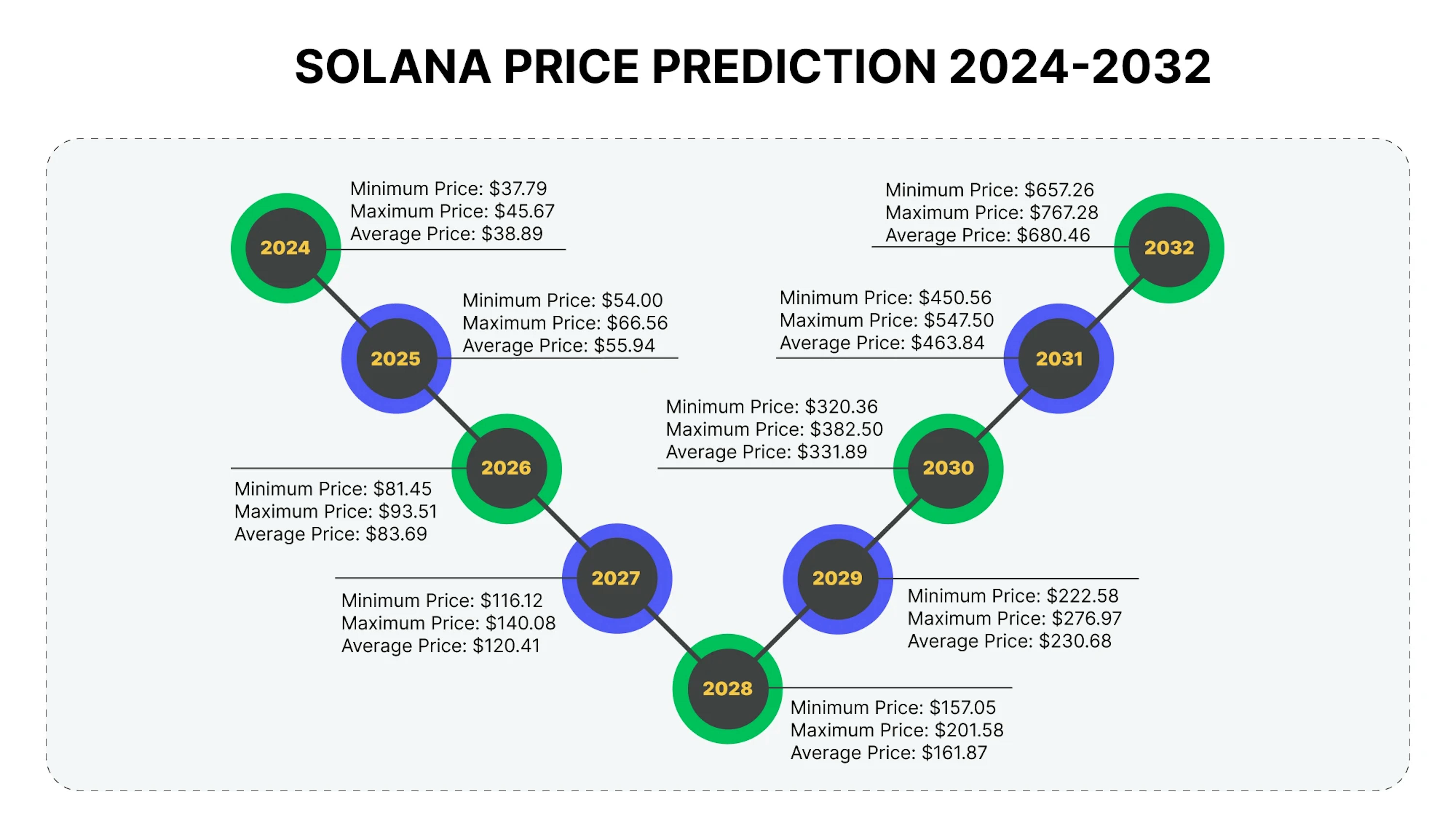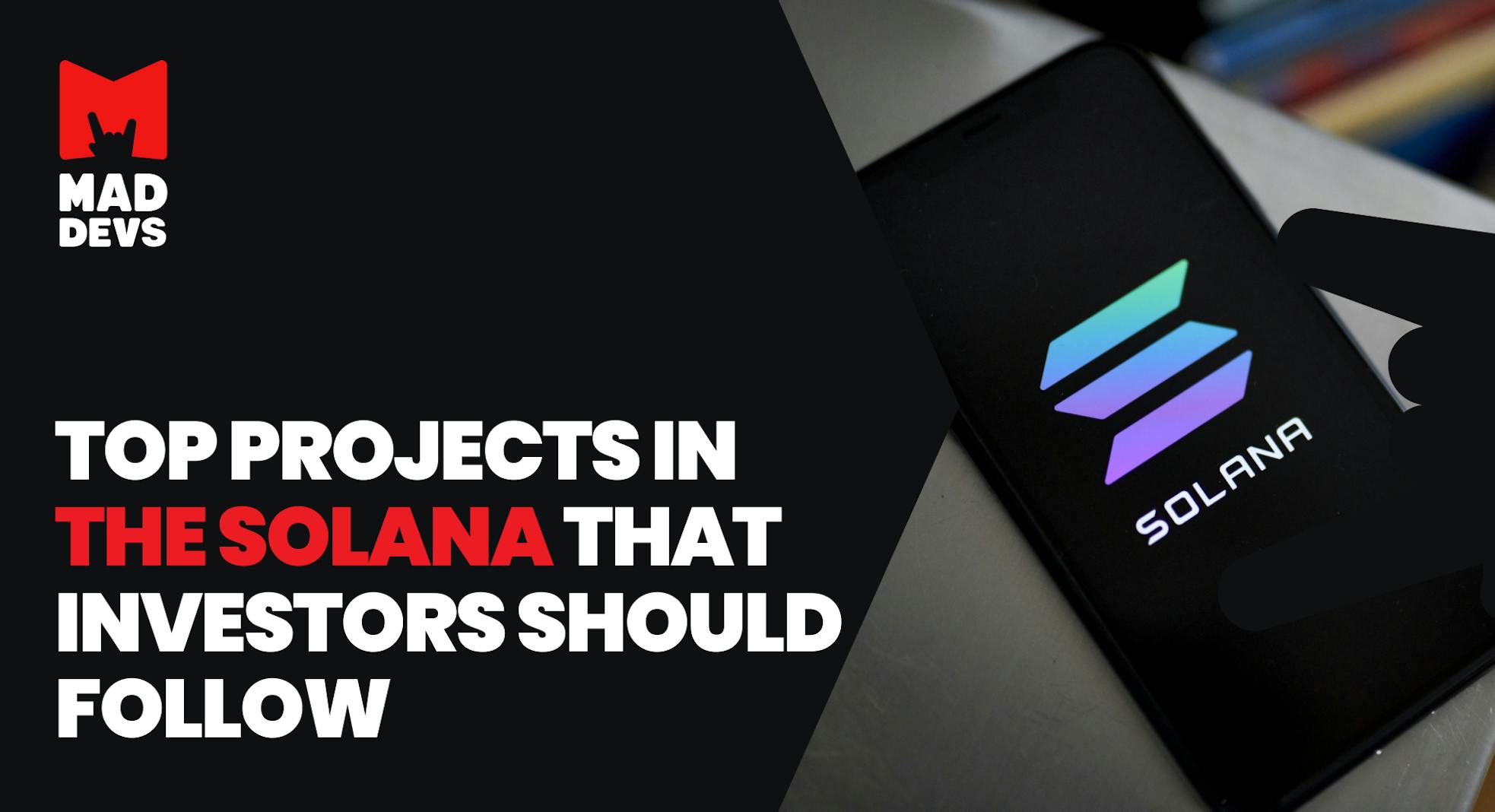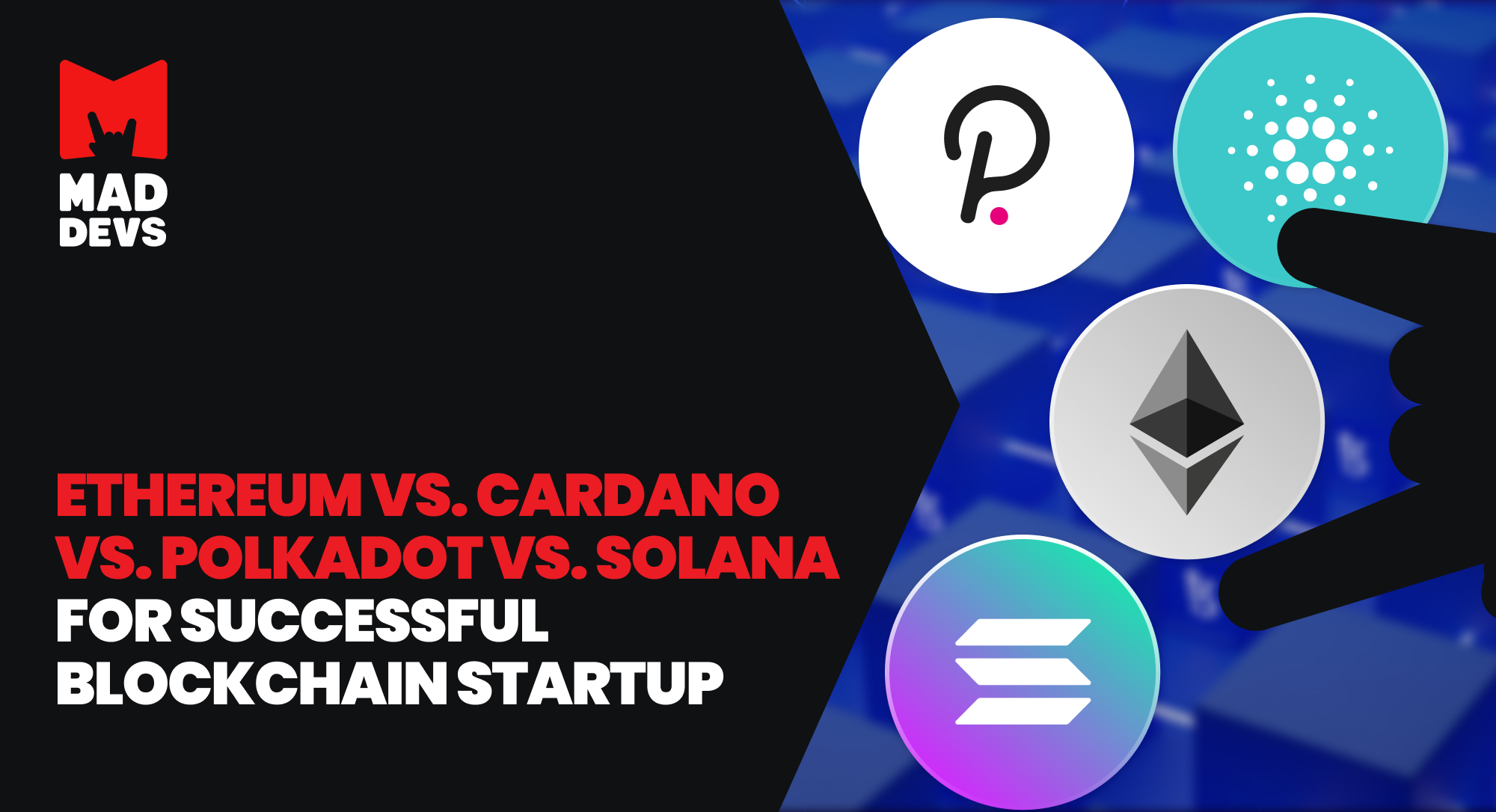The open-source Solana project implements a new, high-performance, permissionless blockchain. It is one of the fastest modern blockchains and the rapidly growing crypto ecosystem, with thousands of projects spanning DeFi, NFTs, Web3, etc. Solana offers developers decentralized applications (dApp), a platform for cost-effectively developing applications. More than 350 Solana projects exist on this open-source blockchain.
This article provides an overview of Solana, its fundamental concepts and unique features. Additionally, we will highlight top projects within the Solana ecosystem.
Brief overview of Solana
- Founded in 2017 for hosting dApps.
- Exceptional transaction speed, processing over 50,000 transactions per second.
- Offers lower transaction fees compared to Ethereum and Bitcoin.
- Diverse applications, including DeFi, GameFi, and NFTs.
- Emerging as a strong competitor to Ethereum.
- Total Value Locked (TVL) at $338.82 million in October 2023.
- Solana Foundation holds shares in FTX Trading LTD (approx. 3.24 million), FTT tokens (3.43 million), and 134.54 million SRM tokens from Project Serum, a Solana-based decentralized exchange by Bankman-Fried in 2020.
Why focus on Solana over Ethereum projects
When it comes to blockchain and cryptocurrency investment, it's no secret that Ethereum has been a dominant force for years. However, Solana presents better investment opportunities with the most potential and relevance. Let’s highlight the main point to remember.
- Performance excellence, scalability, and lower transaction costs set Solana apart.
- Diverse use cases and rapid adoption fuel its expanding ecosystem.
- Interest in Solana from developers and innovators fosters a vibrant community.
- Lower barriers to entry, welcoming a broader user base.
- Competitive market dynamics present early-stage investment opportunities.
Now, we are going to break down these points and explore Solana’s specific features in detail.
What are Solana’s features
Solana is the world’s first web-scale, fast-growing smart-contract and open-source blockchain protocol that enables developers to build dApps on its ecosystem. Due to its security, censorship resistance, and cost-efficiency, numerous developers are choosing to develop on Solana ecosystem dApps.
Let’s list Solana's features that enable fast and scalable transactions.
PoH and PoS
Solana uses the Proof-of-History (PoH) concept that allows a blockchain not to rely on time, with each node running its clock without knowing any other participants' clocks. This model leverages a set of protocols to execute transactions with high throughput – more than 60,000 transactions per second (TPS). PoH helps eliminate the issue of scalability and time needed to reach a consensus on transaction orders.
Also, Solana employs a Proof-of-Stake (PoS) consensus mechanism to improve throughput and scalability. The PoS and PoH consensus mechanisms are unique compared to Bitcoin’s proof-of-work or Cardano’s proof-of-stake models.
Horizontal scaling
Tasks can leverage parallel processing across multiple computers, maximizing the benefits of distributed resources. Additionally, Solana facilitates seamless hardware-level connectivity between CPUs, SSDs, and GPUs. Below are some key distributed systems:
- Tower BFT: a Byzantine Fault Tolerance consensus mechanism that maintains network security and reliability by leveraging stakeholder voting.
- Solana Runtime: a runtime environment for executing smart contracts and dApps, offering high-speed and efficient processing.
- Sealevel: Solana's networking stack, designed to optimize communication between nodes and facilitate rapid data exchange.
- Gulf Stream: Solana can process multiple transactions simultaneously across the network.
- Hydra: a multi-chain architecture designed to further enhance scalability by creating multiple sidechains, each with its consensus mechanism, while maintaining interoperability with the Solana mainnet.
- Wormhole: a cross-chain bridge that allows assets to be transferred securely between different blockchains, enhancing Solana's interoperability with other blockchain networks.
- Anchor: a development framework for creating dApps on Solana, simplifying the process for developers and promoting the growth of the ecosystem.
Turbine protocol
Solana utilizes the Turbine protocol to efficiently transmit data in smaller portions to nearby node clusters known as neighborhoods. This approach accelerates transaction validation.
Leader notes on rotation
In Solana's network, leader nodes take turns validating transactions within a cluster and enhance overall efficiency. Periodic rotation of leader nodes helps maintain network integrity by preventing malicious or nonfunctional nodes from causing transaction bottlenecks.
Miniscule block rotation
One of Solana's key strengths is its minuscule block time of 400 milliseconds. This exceptionally short block time enables rapid transaction processing, allowing the network to handle thousands of transactions per second with ease.
Solana ecosystem
Presently, the Solana project is the most performant permissionless blockchain. Its architecture satisfies all three desirable properties of a proper blockchain: it is scalable, secure, and decentralized.
Is Solana coin worth investing in?
Solana is a fast-growing contract cryptocurrency, and it is the second-largest blockchain with the lowest transaction costs. The Solana's price has seen significant fluctuations:
Early Surge (2020)
Solana's price started at $0.75 and reached a high of $214.96 in September 2020, driven by growing interest in NFTs and the DeFi community.2021 Bull Run
During the summer of 2021, Solana's price more than tripled, attributed to the NFT frenzy and increased demand in the DeFi sector.FTX Impact (2022)
The collapse of crypto trader FTX in 2022 had a notable impact on Solana. FTX and its sister company, Alameda Research, sold a substantial amount of SOL in an attempt to avoid bankruptcy.Google Cloud Validator (2022)
Solana briefly surged to a four-week high of $38.48 on November 6, 2022, following the announcement that Google Cloud had become a validator on the Solana blockchain.Price Consolidation (2023)
By May 7, 2023, Solana's price had stabilized at around $21.99, reminiscent of its early 2021 levels.
These price fluctuations highlight the volatility and sensitivity of the cryptocurrency market to various events and announcements. Investors need to stay informed and exercise caution in this rapidly changing space.
Solana price prediction 2024-2032
These price predictions for SOL are based on technical analysis and insights from cryptocurrency experts. It's important to note that cryptocurrency markets are highly volatile and subject to various factors that can influence prices. Here's a summary of the predicted price ranges for SOL in the coming years:

Top projects on Solana
Today, Solana has helped bring to life over 350 projects; while Solana’s ecosystem isn’t near as big as Ethereum’s, it doesn’t mean it isn’t growing. So, let’s focus on some of Solana's projects to follow.
DeFi
Mango Markets

Mango Markets ia an open-source trading, borrowing, decentralized cross-trading, and lending platform. So, users can take earnings from one transaction and use them to place orders for another without exiting the first order.
| TRADING FEELS | LENDING AND BORROWING FEELS | PERPETUAL CONTACT FEELS |
|---|---|---|
| Takers: 0.05% Makers: -0.04% (rebate) | Lending: 0% Borrowing: Variable, depending on the asset and the market conditions | Takers: 0.05% Makers: -0.04% (rebate) |
Key features for your advantage:
Cost-effective trading
Mango markets stand out with some of the most competitive fees in the DeFi space, thanks to the swift and scalable Solana blockchain.Collateral flexibility
It allows users to cross-margin their positions, meaning that they can use any of their assets as collateral to open leveraged positions.Perpetual contracts
It offers perpetual contracts, which are derivatives that allow users to bet on the future price of an asset without having to take delivery of the underlying asset.Lending and borrowing
Let users lend and borrow assets, earning interest on their deposits or using borrowed assets to open leveraged positions.User-driven governance
Mango markets are governed by its token holders, who can vote on proposals to improve the platform.
Here are some additional stats about Mango Markets:
- Over $1.86 million in total value locked (TVL)
- Actual Mango Market stat in real-time
Orca

Orca is one of the top decentralized exchanges built on Solana; it can boast a large traded volume with an impressive $516.6 million in total value locked. The exchange was first introduced when Solana's infrastructure was minimal.
Orca also stands out for its ‘human-centered’ unique design because the UI design process involves interviewing users. They observe how users use existing products to identify pain points and areas for improvement.
Key features for your advantage:
Deep liquidity
Its deep liquidity pools allow investors to trade large amounts of assets without experiencing slippage. This is important for investors who need to execute large trades quickly and efficiently.Low fees
Orca's low fees make it a cost-effective platform for trading and investing. This can save investors a significant amount of money over time, especially if they are trading frequently.Fast transaction speed
It allows investors to get their trades executed quickly and efficiently. This is important for investors who need to react quickly to market changes.Versatile trading options
Variety of trading options gives investors the flexibility to trade in the way that best suits their needs. For example, investors who want to leverage their positions can use Orca's margin trading feature.Innovative features
Orca's innovative features, such as Orca Pools, can help investors earn yield on their assets. This can be a valuable way for investors to generate passive income from their crypto investments.
Here are some additional stats:
- $45.77 million in total value locked (TVL)
- Actual Orca stat in real-time
SolFarm (Tulip)

Solfarm, operating on the Solana blockchain, is a yield aggregator that empowers users with auto-compounding vault strategies. Solfarm enables users to amplify their profits with elevated Annual Percentage Yields (APYs), all while minimizing the need for complex management. Token holders can lend their assets for interest and access Leveraged Yield Farming. Notably, Solfarm is a winner of the Solana Hackathon 2021, emphasizing its importance in the Solana ecosystem.
Solfarm is a winner of the Solana Hackathon 2021, emphasizing its importance in the Solana ecosystem.
Key features for your advantage:
High yields
SolFarm's high yields allow investors to generate significant returns on their investments. This can be especially beneficial for investors who are looking to grow their wealth quickly.Multiple yield farming strategies
A variety of yield farming strategies gives investors the flexibility to choose the best strategy for their risk tolerance and investment goals. This means that investors can minimize their risk while still earning a good return on their investment.Easy to use
User-friendly interface makes it easy for investors to use its various features. This saves investors time and effort and lets investors of all levels of experience participate in yield farming.Secure
Security features help to protect users' funds from theft and loss. This gives investors peace of mind knowing that their investment is safe.
Here are some additional stats:
- $7.898 million in TVL
- Actual Tulip in real-time
Wallets
Phantom

NFT Phantom Wallet is a top-performing project in 2021. The Solana Phantom wallet is a next-generation multi-cryptocurrency payment gateway that accepts Solana as a payment method. Though Phantom accepts only Solana as payment, it has a token swap feature.
By the way, it supports NFTs and collectibles, making the Phantom app more beneficial for users. Users can see them on their app along with trading them. With network fees as low as $0.01 per transaction, users can make hundreds of transactions with a single USD. The phantom wallet is available as a mobile download application or browser extension tool for various desktop web browsers. Phantom maintains private keys on behalf of its users by allowing them to generate them.
Key features for your advantage:
Security
Phantom wallet's non-custodial nature gives investors full control over their private keys. This means that investors can be confident that their funds are safe and secure. It's considered the best and most secure wallet available.Ease of use
This user-friendly interface saves investors time and effort, and makes it possible for investors of all levels of experience to use the Phantom wallet.Speed
Wallet's fast operations speeds allow investors to get their transactions processed quickly and efficiently.Features
Phantom’'s variety of features make it a versatile wallet that can be used for a variety of purposes. For example, investors can use the Phantom wallet to stake SOL tokens, interact with dApps, and send and receive Solana tokens.
Phantom stats: Over 3 million users in June 2023
Solflare

Solflare is another one of the Solana ecosystem’s most popular wallets. Solflare is an all-in-one digital wallet solution for Solana.
It is user-experience-focused and NFT-friendly, enabling safe storage, transactions, token swaps, and staking on the Solana ecosystem. One of the top features of the Solаlare wallet is having full access to your funds at all times and the option of investing in both audio-based and visual NFTs.
Some notable advantages include:
Security
Robust security measures to safeguard user assets. This includes features like hardware wallet integration and secure key management.Staking
Solflare allows users to stake their Solana tokens easily, enabling investors to earn rewards for participating in the network's consensus mechanism.Governance participation
Investors can participate in the governance of Solana-based projects, which gives them a say in the decision-making processes of the ecosystem.Delegated voting
These capabilities allow users to delegate their tokens to validators of their choice. This can be a way for investors to support the network's security and consensus.SPL tokens support
Solflare supports the Solana Program Library (SPL) tokens, making it possible for investors to manage a wide range of assets and participate in various token-based activities. Solflafe's target audience is individuals looking for a crypto wallet solution to store, stake, swap, and send their cryptocurrencies.Low transaction fees
Solana is known for low transaction fees and high throughput, which makes it a cost-effective tool for investors to perform transactions and interact with dApps.
Web3
Web3 applications (Web3 Apps) on the Solana blockchain are a thrilling development, harnessing cutting-edge internet technologies while maintaining decentralization for widespread accessibility. Here are notable examples.
Squads

A Solana-based treasury fund management application tailored for teams engaged in collaborative asset trading. It streamlines the management of collective assets in the cryptocurrency space.
Key benefits are:
Streamlined collaboration
Squads facilitates seamless collaboration among team members engaged in asset trading, encouraging efficient coordination and joint decision-making in managing collective assets.Enhanced transparency
The application promotes transparency within the team, providing visibility into asset management activities, investment strategies, and trading decisions, which fosters trust and accountability among team members.Efficient fund management
It simplifies the process of managing collective assets in the cryptocurrency space, enabling investors to optimize their fund management strategies and improve overall portfolio performance.Risk diversification
By pooling resources and expertise, investors can diversify their risk exposure across various assets and investment opportunities, thereby reducing the overall risk associated with individual investments.Increased buying power
Pooling funds through Squads can provide investors with increased buying power, allowing them to access potentially lucrative investment opportunities that may have been out of reach individually.
Alchemy

An innovative and scalable web development platform that accelerates the creation of Apps on the Solana blockchain. It equips developers with robust tools for efficient dApp development.
Several key benefits for investors:
Early access to promising projects
Investors using Alchemy may gain early access to innovative dApps and blockchain projects built on the Solana network, potentially identifying opportunities for early-stage investments and high returns.Scalability
Alchemy is designed to support scalable dApp development, which can attract a wider user base and increase the potential for the success of dApps. This scalability can enhance the investment potential of projects built on the platform.Efficient development
Alchemy equips developers with robust tools, which can lead to more efficient dApp development. Faster development cycles can reduce operational costs and accelerate time-to-market, potentially benefiting investors through quicker adoption and potential revenue generation.High-performance dApps
DApps built on Alchemy are optimized for performance on the Solana blockchain, known for its speed and low transaction costs. This can attract users and create a favorable environment for dApps to thrive, ultimately benefiting investors through increased usage and adoption.
NFTs
Solanart

Solanart is the first fully-fledged NFT open marketplace in the Solana ecosystem. With user-friendliness at the forefront, Solanart enables users to connect their SPL wallets and seamlessly explore, buy, and sell digital collectibles. While the platform remains in open beta, Solanart is home to the most prominent Solana-based NFT collections, such as Moonrock Capital, Aurory, and Degenerate Ape Academy.
*Moonrock Capital, Aurory and Degenerate Ape Academy – Solana-based NFT collections
Solanart in numbers:
Metaplex

NFTs can be created and minted using Metaplex's open-source protocol, which uses a standardized format across wallets and applications. Metaplex enables artists and creators to launch self-hosted NFT storefronts as quickly as building a website. Ultra-fast NFTs with insanely low minting fees. Metaplex is a viable alternative to the existing NFT ecosystem. Developers, token holders, and validators can leverage Solana's open-source infrastructure.
Metaplex in numbers;
- Amount of collections 144,058
- 61.7 Million NFTs minted
- $1.1 Billion creator revenue
Solsea

As part of its new NFT marketplace, Solsea introduced several groundbreaking features in August 2021. Solsea claims to be the first NFT marketplace that enables creators to choose and embed copyright licenses when they mint NFTs.
NFTs with embedded licenses, a rarity index for NFT collections, wallet funding through FTX, and integrated NFT minting. Users could also track upcoming NFT drops with Solsea's marketplace calendar. Solsea benefits from the same low-cost, high-speed transactions as the rest of the Solana ecosystem.
On June 29, 2022, the release of SolSea Reborn signified an era of transformation for the platform. It introduced a major platform redesign, improved UI/UX, and a host of new features, including reduced trading fees, real-time mints, a slide-in wallet, Solana analytics, a creator dashboard, categorized listings with subcategories, a shopping cart, and seamless token swapping via Jupiter integration.
Solsea in numbers:
- 2% marketplace fee
- at least SOL 0.2 deposit for start
- Volume of market transactions $32,54M
Games
Star Atlas

Star Atlas is a space-themed strategy game that combines Unreal Engine graphics with the unmatched capabilities of the Solana blockchain.
Star Atlas is a next-generation, play-to-earn space-themed MMO strategy game and metaverse with a number of potential benefits for investors. It has a strong team, innovative technology, engaging gameplay, and a play-to-earn economy. Investors who are interested in the gaming and metaverse industries should keep an eye on Star Atlas.
You can already trade both the Star Atlas token and Polis, which will be the governance token and even some in-game items as NFTs.
Star Atlas stats:
- As of the latest available data, the price of Star Atlas (ATLAS) is $0.001464 USD.
- In June 2023, Star Atlas set a new record with 2.093 million transactions in a single day, accounting for about 8.3% of all transactions on the Solana chain that day, showcasing its growing popularity and player engagement.
Aurory

Aurory is not a typical Solana gaming project. It is a top-selling gaming project with play-to-earn mechanics. This project is built on the Solana ecosystem, with its in-game marketplace powered by Serum
This fantasy game features both players vs. player and players vs. environment game modes. In both player vs. player and players vs. environment game modes, players will be able to collect NFTs and $AURY tokens. By playing the game, players earn tokens and NFTs. Players can trade these in the marketplace and increase their chances of success in the game.
Aurory in numbers:
- In September 2022, the 10,000 Auriorian characters NFT sold out in a few seconds.
- Market cap is $13,793M
Other notable projects
Take a look at the notable projects in the Solana metaverse.
Audius

Audius is a decentralized artist-controlled and community-owned music-streaming platform for musicians, aiming to give back power to the users. It functions as a music co-op, with incentives aligned between the node operators, artists, and fans that make the network work. Audius has incorporated a social media style approach and allows anyone to post music to gain an audience and interact with them.
Audius is powered by the AUDIO token and integrated with Phantom to bring Solana NFTs to its platform, choosing to migrate to Solana’s protocol due to its speed, low fees, and censorship resistance.
Audius statistics:
- The price of AUDIO is $0.14USD
- Annual revenue: $5M - $10M
- $340M active stakes
- 4,8M unique users per month
Civic

Civic was established in 2015 by serial entrepreneurs Vinny Lingham and Jonathan Smith. The company provides adaptable identity verification technology tailored for businesses and leverages digital identity as a doorway to decentralized finance on the Solana blockchain. Civic utilizes the open-source, blockchain-based ecosystem of identity.com to authenticate credentials.
Beyond introducing identity components to the Solana ecosystem, Civic is actively working on a Solana-powered wallet named Civic Finance. This wallet will be integrated with the existing mobile Civic Wallet, which operates on the Ethereum blockchain. According to the team, Civic Finance is set to deliver an intuitive user interface, secure identity-based key management, and a reliable storage space for SPL tokens, including popular options like Tether (USDT), USDC, and CVC.
Civic in numbers:
- Live market cap: $88M
- It has a circulating supply of 1B CVC coins
Summary
Solana has come a long way since its launch in 2020. Throughout the whole time, it attracted numerous notable projects to the ecosystem, thereby increasing the audience. Betting on the project’s strengths — scalability, high throughput, and sub-penny fees. One of the reasons there are so many interesting projects.
Please note that cryptocurrency prices can be highly volatile and change rapidly, so it's advisable to check real-time prices on a trusted cryptocurrency exchange or market tracking website for the most up-to-date information.
If you're interested in developing a blockchain product, we're here to assist you. Book a consultation with us to explore how we can collaborate on your blockchain project.












